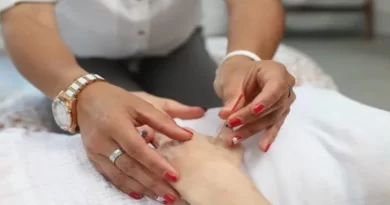What’s Causing White Spots on Skin
White spots on skin may have different causes and conditions. Well in most conditions it’s not the topic of concern and treatable at home. Usually, the white spots on the skin often flare up when the protein of skin or dead cells are confined under the skin’s surface. It may also occur due to depigmentation or color loss.
White spots won’t cause a major issue most of the time and are normal under some conditions. But it doesn’t mean to leave it on their own and wait for them to diminish, rather take a check by a dermatologist to know the cause of it and treat it specifically.
Now, we need to understand what’s causing these white spots on your skin and how to spot them. So, we will go through each possible skin condition and that may cause you this.
Table of Contents
Sunspots/ guttate hypomelanosis
Sunspots are kind of white spots where skin pigment is gone. Usually, they don’t show any symptoms other than an appearance on the legs before they come above the arms, back, and face.
However, it’s medically not sure what causes sunspots, possibly a lack of skin pigment melanin might be involved in causing this. Sunspots may appear after 40 and can run in families.
Though they are harmless and their treatment is a cosmetic issue. Exposure to the sun without wearing sunscreen or without covering your skin increases the risk of skin cancer, sunspots don’t suggest such risk of development of skin cancer.
Treatment options
As we told you sunspots don’t cause any symptoms other than changing the color of the skin, and some people don’t feel like treating it. While for some people the signs are noticeable enough and cover a large portion of the body, treatment becomes important in this case.
Treatment options include:-
Start wearing sunscreen before going into the sun, and cover the exposed area of the skin. You can check the brands online.
Limit your exposure to the sun and don’t spend too long
Avoid artificial tanning bands
Purchase a topical steroid cream hydrocortisone either online or from your nearby pharmacy store.
You may also use a topical retinoid cream like retinol or tretinoin
Dermabrasion, a process that involved removing the outer layer of skin physically
The topical steroids and retinoids creams help cells to come above and remove the outer skin layer to allow the cells turnover.
Tinea versicolor/ pityriasis versicolor
The spots in tinea versicolor may appear in shades of red, pink, and brown. That’s why they are more visible on the tanned skin which can increase in size over time. Generally, in people with tinea versicolor, the fungus that lives on the skin normally gets out of control and grows unlimited.
The signs of tinea versicolor include dry and scaly patches that may be darkened or lighter than the normal surrounding skin. The patches grow gradually and fairly and usually form a cluster. Due to the light color of patches, they are mostly seen on the tanned skin. Symptoms appear more in hot and humid environments. TV is a widespread condition.
It’s too not clear exactly in terms of causes, but possible reasons may include:-
- Oily skin
- Humid and warm conditions
- Excessive sweating
- A weak immune system
Some teenagers may be triggered by the condition more due to having oily skin.
Treatment option
The symptoms may go away in cold weather and can reappear when the temperature goes high and humidity is high. Hence, early treatment to prevent such flare-ups.
The mild symptoms can be treated with over-the-counter antifungal products. Such as antifungal shampoos, soaps, creams, and washes as the first-line treatment. These are available in pharmacy stores as well as online.
How this antifungal medication works, they reduce the yeast and help in reducing and eliminating the spots.
This topical antifungal contains:-
- Ketoconazole
- Clotrimazole
- Miconazole
- Selenium sulfide
- Pyrithione zinc
These medications or further treatment will be needed each month in hot weather or during the summer and spring season, even if the symptoms go away. If any skin area is not responding well to these topical antifungals your doctor may prescribe you oral antifungal pills for a short period.
It may take a few weeks to a few months to fade away and the skin to regain its natural color.
Eczema/ atopic dermatitis
Eczema is characterized by red, itchy rashes and raised bumps along with white spots or patches with rashes. Eczema affects several areas including the face, scalp, hands, feet, elbows, eyelids, wrist, and back of the knees.
The red rashes always feel intensely itchy and can be worse at night. Scratching those will lead to open and leaky lesions. With time, the most affected areas by eczema may become more thick, dry, and scaly.
Eczema symptoms often trigger again without a known pattern, like for some time the symptoms may remain dormant and then flare up again suddenly.
Also read: can psoriasis be cured
Eczema affects children mostly but can affect any age group. Maybe it stays for a long time in severe conditions. It starts in children before age five on an average, or either can start during infancy. However, it’s most common in people with allergies.
Treatment option
Treatment of eczema supports symptom management. It’s possible to treat your eczema with good care of your skin and motivated behavior that will help your skin to stay healthy and hydrated.
Treatment is more on home remedies you can try to reduce symptoms:-
- Stop using harsh soaps and use mild cleansers
- Use medicated creams as per prescribed
- Always keep your skin moisturized
- Don’t take hot showers for too long
- Avoid allergens as much as possible
- Stay away from smoke such as cigarette smoke
- Use natural solvents not chemical ones
- Use hand gloves while using cleaning solvents
Using antihistamine topical creams or oral pills to get rid of itching. And if these things don’t work, your doctor may suggest some topical corticosteroids.
Pityriasis alba
Pityriasis is a widespread and non-cancerous condition causing red and scaly patches. It typically results in a pink and a slightly scaly patch over the chin and cheeks. Though, these patches heal with time leaving behind white spots on the skin.
Pityriasis affects children ages between 3-16, particularly the face, and can also impact the neck, arms, shoulders.
The known may be a mild form of atopic dermatitis- eczema. Pigmenting pityriasis is a rare condition though it’s been reported under the form of PA, which causes bluish-white scaly patches and is spotted by a very light skin patch. Pigmenting pityriasis also affects the face more and affects children often.
Treatment option
Symptoms of PA may disappear on their own but can come again. Most people don’t look for treatment other than itching and skin discoloration. Also, the medications prescribed for application over skin help in the reduction of inflammation and itchiness or dryness related to the condition.
The treatment options may include:-
- Moisturization of skin
- Low-dose topical corticosteroids such as 1% hydrocortisone cream which you can purchase online.
- Or either Elidel cream which is a nonsteroidal cream
Vitiligo
Vitiligo happens when the skin cells’ melanocytes stop the production of melanin. Melanin is the pigment that provides color to your skin, eyes, and hair. Without those pigments, white spots on the skin may start to appear regardless of any particular part. It can appear anywhere in the body. Vitiligo is however symmetrical which can appear on only one side of the body. The typically affected parts by vitiligo are the knees, hands, hair, and genitals. Sometimes it may affect the parts with mucous membranes like the inside of the mouth and nose.
This condition may trigger you in your early twenties but can occur at any age. The cause is not known yet. It could be caused due to genetics or an autoimmune disease like hyperthyroidism.
Treatment options
When symptoms are minor, people can prevent white spots on the skin by avoiding exposure to the sun and preventing skin from tanning.
Treatments options include:-
- A low-dose corticosteroid cream like 1% hydrocortisone cream
- A non-steroidal cream, elidel
- U.V light treatment along with topical medications
- Tattooing over the affected skin
- Bleaching around the large white patches to make them light and blend
If the above methods fail to do so, surgery can be performed to remove the upper layer of skin.
Let’s talk it in a little short and clear all your doubts associated with the reason for white spots.
White spots on skin after sun
Usually, these white spots are caused due to sun exposure and need no treatment at all. Sun exposure affects the melanocytes which produce the skin’s pigment melanin which is responsible for skin color. A sun’s exposure kills the melanocytes causing them not to make melanin and result in unwanted white spots on the skin.
White spots on skin after sun exposure can be overcome by some topical creams, dermabrasion, and topical steroids.
White spots on skin after covid
People having vitiligo may think they are more susceptible to covid-19 due to their existing condition. Then the answer is no. While vitiligo is an autoimmune disease caused due to the hyperactivity of your immune system. This is good news, as your immune system isn’t weak but hyperactive to certain things. So, you won’t be affected by covid severely or drastically, your symptoms might not be dissimilar to other people with covid-19.
As yet, no evidence is there for white spots on skin after covid. White fungus is something that is coming as a result of a lack of immunity in some people.
White spots on skin during pregnancy
As you know women go through a lot of changes during pregnancy, because of the elevated levels of certain pregnancy hormones. However, it may affect the skin as well like along with acne, stretch marks, dark spots some women may also develop tinea versicolor. Well, it’s not the topic of worry and it gets normal once the hormones come to a level. You can consult your dermatologist for further doubts.
Conclusion
White spots on skin may have different causes with quite common symptoms. On the good side, white spots go on their own and by applying a skincare routine. Sunspots, vitiligo, tinea versicolor, eczema, and pityriasis alba are some common conditions for causing whitish patches or spots on skin. Preventing your skin from sun exposure, using topical corticosteroids, avoiding harsh soaps and peeling out the skin’s outer layer may help to overcome the symptoms. bet365 arab
Frequently Asked Questions
What causes small white spots on skin?
There are different reasons for white spots on skin like sun exposure and various skin conditions such as vitiligo. In vitiligo, the skin cells, melanocytes stop making skin pigments called melanin, which is responsible for the color of our skin, hair, and eyes. It’s an auto-immune disease in which the immune system becomes hyperactive and starts attacking its own skin cells, causing white patches.
Which vitamin deficiency causes white spots on skin?
Deficiencies of Vitamin d, vitamin e, and calcium can cause white spots on skin. But these spots are harmless and it only indicates that you need to eat a more healthy and balanced diet.
Can white spots on skin be cured?
White spots on skin, known as vitiligo medically, is a non-curable disease and usually stay lifelong. However, the symptoms can be suppressed and prevented from further spreading, by proper treatment and applying a good skincare routine. This condition can affect someone’s mindset and confidence about their looks. But this is normal and one has to deal with it with confidence and a positive mindset.
Are white spots on skin normal?
Yes, white spots on skin are quite normal and may be caused by sun exposure or any other medical skin condition. The areas of white spots appear lighter than your normal skin color. But are harmless and treatable with medications and a good routine. Sometimes it can be a sign of not eating well or a deficiency of certain vitamins and calcium.
Anyway, white spots aren’t that critical even if the cause is a serious skin condition. كيفية لعب بوكر
Do white sun spots go away?
White spots caused by sun exposure may go on their own by taking care while going in the sun like sunscreen and covering your exposed areas. Usually, no treatment is needed and only preventive measures will be able to treat the issue. If it doesn’t go your doctor may prescribe you topical corticosteroids creams or oral pills for so. Dermabrasion is a process of peeling out the skins’ outer layer that can reduce the visibility of these spots.
Does vitamin B12 deficiency cause white spots on skin?
Skin sores associated with vitamin b12 deficiency may come as hyperpigmentation, angular stomatitis, vitiligo, and hair changes. When cutaneous sores do not respond to typical therapies can be a sign of vitamin b12 deficiency. Well, sometimes you may be taking it enough, but it’s not well absorbed in your body, hence a condition of malabsorption may also contribute to these white spots on skin.
Does coconut oil remove white spots?
Yes, coconut oil is effective in treating white spots. It promotes repigmentation of the skin in vitiligo, as it has soothing and healing properties. Coconut also has antibacterial and antifungal benefits. You can use coconut oil 2-3 times over white spots for a few weeks.
How can I increase melanin in my skin?
Vitamin A however is excellent in melanin production as it functions as an antioxidant. You can get vitamin A from a variety of vegetables and foods you eat such as carrot, sweet potato, peas, and spinach. Vitamin e is also a very good vitamin for skincare and health.
What’s the symptoms of low vitamin D?
Lack of vitamin d may indicate:-
- Muscle pain
- Bone pain
- Joint pain
- Fatigue
- Lack of energy
- Anxiety
- More frequent illness
- A sour mood
How do you get rid of white spots?
As a first-line treatment, your doctor may prescribe you topical corticosteroids or oral pills to regain the skin’s natural color and further spread those whiter patches. ربح مال حقيقي Later on, ultraviolet light therapy may be recommended or either skin grafts for getting rid of these small patches.


